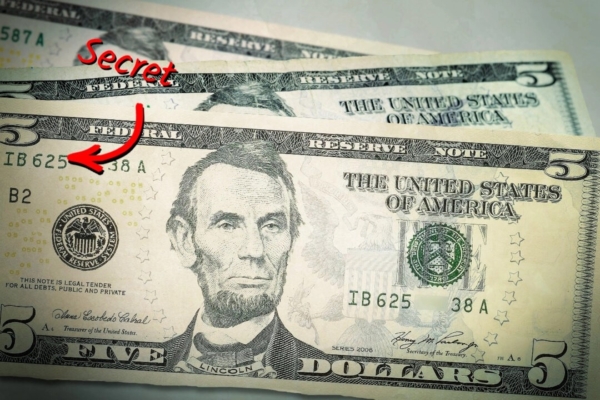Take a close look at this $5 bill: it’s dirty, torn at the edges, and covered in ink due to its age. This bill is far from its prime condition when it was brand new and crisp.
But despite these wear and tear, flaws, creases, and stains, its value could surpass its face value by far, potentially worth thousands of dollars.
While it can be said with certainty that most dollar bills are more valuable than the paper they are printed on, more people are realizing this: every bill in your wallet is like a lottery ticket. A winning number could be in your jeans pocket, waiting to be cashed in.
Shaun, also known as Blueridgesilverhound, suggests it’s time to talk about what you have in your wallet now. He passionately discusses what the serial numbers printed on dollar bills could mean. If you know the secrets, their value could be far higher than their face value.
Shaun points out that a $5 bill from 1988 was sold for $2,024, despite being far from its original state and damaged due to creases and ink stains. Despite its worn appearance, its value increased by over four hundred times.
What’s the reason? Collectors of rare bills are willing to pay a hefty price for any denomination from $1 to $1,000 or more with special serial numbers. And there are several specific number combinations to look out for.
The $5 bill priced at $2,024 is unique due to its serial number, where each digit is the same. Consecutively repeating numbers like 7 and 8 are particularly enticing, and this specific bill is printed with green ink: “G88888888A.” According to GO Bank Rates, sequentially repeating serial numbers are rare, appearing only once in every 11 million bills. They could be worth $500 or more, even if they don’t look brand new.
Bills with numbers close to repeating but not entirely can’t fetch as much value. Shaun mentions a $20 bill and a $1 bill found in someone’s wallet, selling for ten times their face value, despite not being in mint condition. The $20 bill has the serial number “ME79777777E,” and the $1 bill has “C72777777D.” The value of numbers close to repeating is significantly lower than consecutively repeating numbers, but they are more commonly found.
There are other serial number patterns, such as ladder-like sequences (ascending or descending), like “12345678” or “87654321,” selling on eBay for $9 to $100,000. Near ladder-like sequences can also earn money (advanced ladder-like refers to one or two digits being off), but evidently, they sell for much less.
Similar to ladder-like sequences, consecutively ascending serial numbers that don’t start with “1” or “8,” like “234567XX” or “78923456,” can range in price from a few dollars to several hundred dollars.
Low serial numbers and high serial numbers, with a very low digit like “00000001” or a high digit like “99999900,” can go for over $10,000. Less extreme numbers, such as “00000100,” may fetch a much lower price, ranging from $10 to $300.
Special serial numbers on paper bills can earn you a significant amount of cash, even if they seem mundane. The next time you’re on a bus or about to pay for your next cup of Americano, you should take a look at those “lottery tickets” stashed in your jeans pocket and consider cashing them in.

